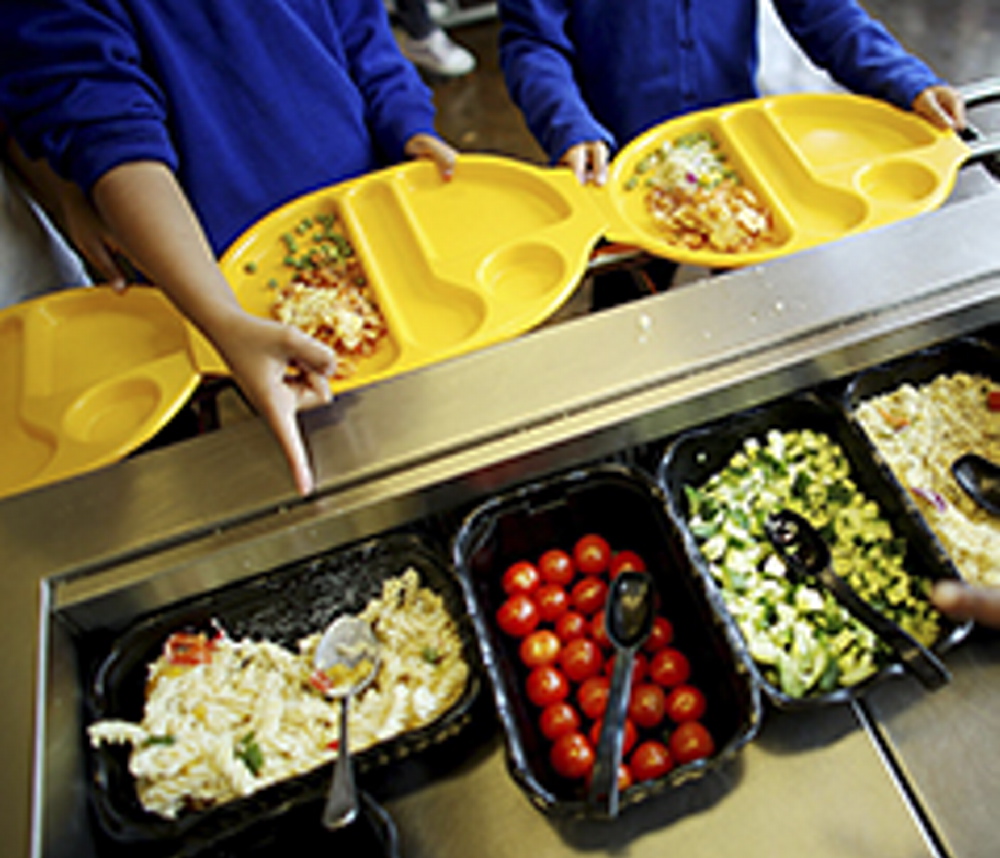Many agencies, groups need to coordinate efforts to get nutritional food into children’s stomachs
Thousands of Maine students arrive at school each day hungry, and leave each afternoon not sure if they’ll get enough to eat at dinner. During the summer months, most of those students are left without access to regular, nutritious meals.
That’s the challenge facing a new legislative task force, and it’s a significant one. Solving it will require the cooperation and coordination of a handful of state and federal agencies and nonprofit organizations, not to mention Maine’s 160 or so local school districts.
That’s a lot to ask of a group that will meet a total of five times this year before submitting its recommendations to the Legislature. But it’s important that the process end with concrete, measurable steps for making sure fewer Maine students go hungry.
GOING HUNGRY
The cost of not getting it right is enormous. Nearly 1 in 4 Maine children are food insecure, ranking Maine 18th in the nation and 1st in New England.
That’s more than 64,000 children who lack access to enough food to meet their nutritional needs, many of whom come from families that do not qualify for the Supplemental Nutrition Assistance Program, or food stamps.
School lunch fills part of that gap, providing one meal a day for about 10 months out of the year. Breakfast and afterschool food programs have become more widespread, as have school-based food pantries and initiatives that send students home with backpacks full of food for weekends and vacations.
And now more students will have access to summer meal programs thanks to a bill passed in the last legislation session.
But each of the programs offered outside of the normal school day comes with significant challenges and is thus far underutilized.
EMPTY SEATS
The breakfast program, for instance, is offered in almost all Maine schools. However, only about half of students who qualify for free or reduced-price lunch take advantage of the morning program.
In many cases, that’s because the school doesn’t have the space for a meal before classes start, or it doesn’t provide enough time to eat. Also, there is a stigma attached to getting school breakfast, which discourages students from taking part.
In any case, for the program to work, it takes a substantial buy-in from school administration and faculty.
The same can be said about summer meal programs. Though there are now 337 summer meal sites, only 18 percent of the students eligible for the free meals have access to a site.
WORKING TOGETHER
Many school districts have successfully partnered with nonprofit organizations to provide space, staffing and transportation for the summer meals programs. In fact, over the last three years, the Maine Hunger Initiative has helped open 49 new summer meal sites.
Because of the new law, more schools will be required to start summer meals programs, and experience shows they’ll need the help of nonprofit organizations, churches and other groups concerned with child hunger.
They’ll also need the guidance of the U.S. Department of Agriculture, which funds the programs, and the state Department of Education, which administers it.
It is the same kind of multi-partner collaboration that will be needed to solve other issues related to hunger.
Bringing more locally grown food into schools, for example, will take the involvement of individual school districts, the state departments of agriculture, education and health and human services, and the USDA, as well as the many local farms and farming organizations.
Herding those agencies and organizations is the key to making child hunger programs work on a wide scale, and any policy put forth by the task force should aim in that direction.
Send questions/comments to the editors.



Success. Please wait for the page to reload. If the page does not reload within 5 seconds, please refresh the page.
Enter your email and password to access comments.
Hi, to comment on stories you must . This profile is in addition to your subscription and website login.
Already have a commenting profile? .
Invalid username/password.
Please check your email to confirm and complete your registration.
Only subscribers are eligible to post comments. Please subscribe or login first for digital access. Here’s why.
Use the form below to reset your password. When you've submitted your account email, we will send an email with a reset code.